Books
Books that can be purchased in the organization:
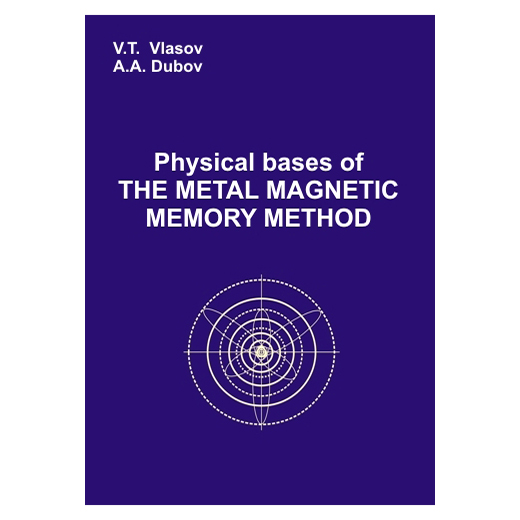
Physical bases of the metal magnetic memory method
The history and logic of magnetism science development is considered. Based on design and experimental researches, development of the domain structure theory is given on the example of pure polycrystalline iron from positions of modern knowledge in quantum physics, dislocations theory and fracture mechanics. Determining role of dislocations in domains formation and correlation of structural materials’ stress-strained state characteristics with dislocation density is demonstrated. A unique effect – magnetoplastics, being the basis of the metal magnetic memory method (MMM) is presented and scientifically substantiated for the first time. The diagram of magneto-mechanical states of a ferromagnetic at force and magnetic fields interaction is developed. Definition of weak and strong magnetic fields from positions of their energy interactions with force fields is first given. Boundary conditions and MMM application scope are established.
V.T. Vlasov, A.A. Dubov 2019, 394 p.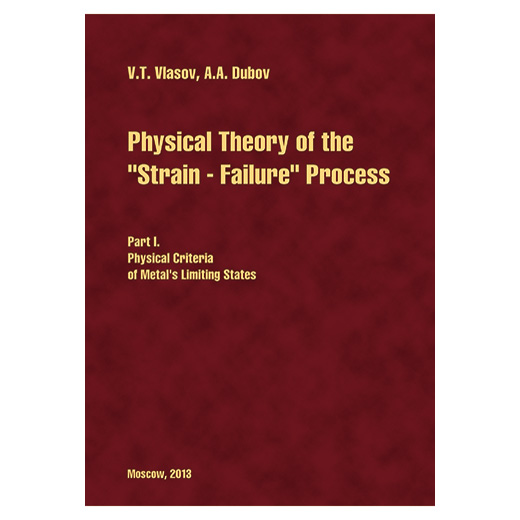
Physical Theory of the “Strain – Failure” Process. Part I. Physical criteria of metal’s limiting states
Basic provisions of the materials resistance theory are considered and their misuse at solution of equipment’s residual life estimation problems is demonstrated. Delusiveness of ideas about existence of principal axes and principal stresses is proved. Capabilities and principal limitations of macroscopic theories of plasticity, yielding and creep at stressed states calculations are analyzed. The physical definition of the concept of “internal stresses” is provided. The physical definition of a structural element as an integral characteristic of the material’s energy state is given for the first time. Analytical correlation of local physical parameters of the structural element straining with real mechanical macro characteristics of the material is established. Physical criteria of the limiting state of products’ material are determined. Bases of the physical theory of the “strain – failure” process are developed. This theory will ensure objective effectiveness evaluation of various stress-strained state inspection methods, strength calculations and equipment life prediction. It will allow providing scientific grounding of defects admissibility norms and the degree of their hazard in non-destructive testing, as well as more effective solution of other problems of fracture mechanics.
V.T. Vlasov, A.A. Dubov 2013, 488 p.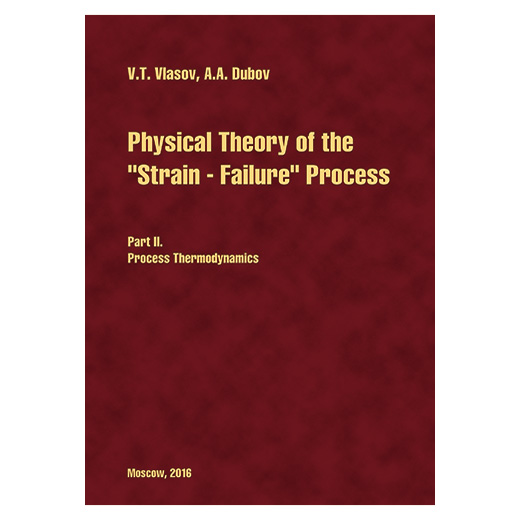
Physical Theory of the “Strain – Failure” Process. Part II. Process Thermodynamics
The existing contradictions between the mechanical characteristics determined in the course of specimens testing and the actual strength of the actual equipment material were considered. The influence of specimens’ geometric dimensions and test temperature on the physical criteria of the product material’s limiting state was demonstrated. Physical nature of singular points and phases of the “strain-failure” process development corresponding to glide angle variations was considered, which makes it possible to understand the actual processes of the microcrack and the main crack occurrence and development. Microcrack dimensions depending on the ratio of the structural element’s geometrical dimensions to the dimensions of the local area of non-uniform strain were determined. It was shown that the material failure is stability loss of the structural element, and on the macro level – of the construction element. In order to establish the energy relation of the strain-force constants to thermodynamic constants, the study of the “strain-failure” process was carried out in terms of basic laws of thermodynamics. It was demonstrated that the thermal component of the material’s self-energy determines, along with the external force field energy, the degree dislocations mobility – the material’s strain capabilities. A diagram of strain-thermodynamic states of different-class materials (bronze, steel, titanium) was developed.
V.T. Vlasov, A.A. Dubov 2016, 223 p.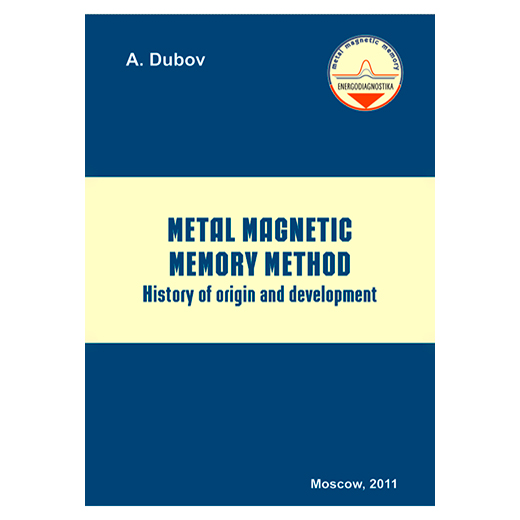
Metal magnetic memory method. History of origin and development
The book considers the history of origin and development of the metal magnetic memory method that represents a new direction in the technical diagnostics. The author describes the difficulties and obstacles faced on the way of the method promotion to the level of national and international standards and its recognition in Russia and abroad. The book is intended for the wide audience concerned with the modern problems of technical diagnostics and equipment lifetime assessment.
A.A. Dubov 2011, 256 p.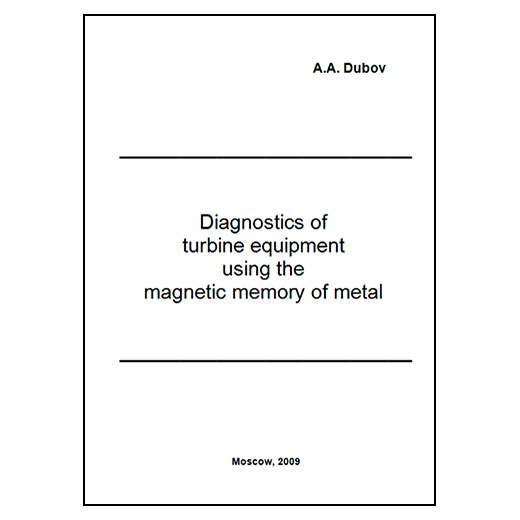
Diagnostics of turbine equipment using the metal magnetic memory
The book provides the information on the practical experience in diagnostics of turbine equipment using the MMM method. Some results of theoretical and experimental investigations, explaining the physical nature of the method, are presented. The book describes the typical damages of disks, blades and other turbine units as well as the techniques of their early diagnostics. Intended for specialists in non-destructive testing, engineering diagnostics, research engineers, students of Higher Educational Establishments, as well as for technical and engineering employees of machine works and various industries, dealing with reliability assurance of turbine equipment.
A.A. Dubov 2009, 148 стр.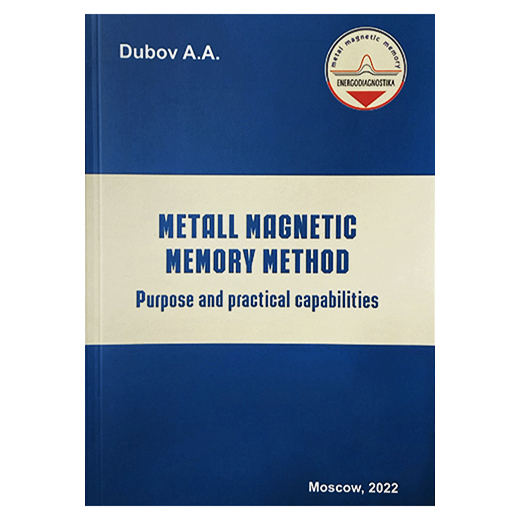
Metal magnetic memory method. Purpose and practical capabilities
The fundamentally new magnetic method of non-destructive testing (NDT) is based on the use of residual magnetization that has formed naturally during products manufacture and in the course of their operation under conditions of a weak geomagnetic field. The presented in the book regularities, established between the natural magnetization and the mechanical characteristics of the metal, led to emergence of the metal magnetic memory concept. The proposed book sets the task to present in a popular and accessible form the physical effects of the MMM method, its fundamental differences from other NDT methods and, most importantly, its practical capabilities for a wide range of experts.
A.A. Dubov 2022, 147 p.